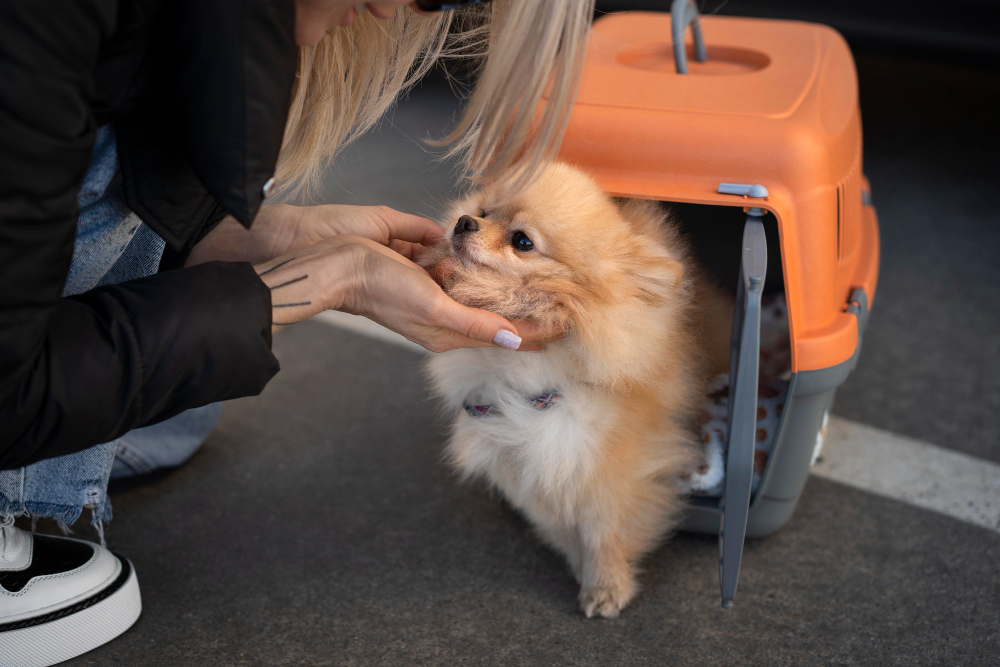Air travel can be a complex ordeal, especially when you’re not flying solo. For dog owners planning to take their pets on international flights, the process can seem even more daunting. From understanding dog crate requirements for international shipping to figuring out the correct airline-approved dog crate sizes, it’s crucial to get the details right for a smooth journey.
Do Dogs Need a Special Crate to Fly?
The first question many pet owners ask is: do dogs need a special crate to fly? The answer is a definitive yes. Airlines have specific regulations for dog crates to ensure the safety and comfort of your pet during the flight. These dog crate requirements for international shipping often include details about the crate’s size, ventilation, material, and door construction.
Standard dog crates may not meet these requirements, making it essential to look for crates explicitly approved for airline use. These crates are designed to withstand the rigors of air travel and provide your dog with a secure, comfortable space.
Airport-Provided Dog Crates and Their Limitations
A related question that often arises is, “do airports provide dog crates?” While some airports may have crates available, it’s not a universal service. Even if available, these crates may not always meet the specific needs of your dog in terms of size and comfort. It’s always advisable to bring your own airline-approved dog crate to ensure your pet’s comfort and familiarity, which can significantly reduce travel-induced stress.
Choosing the Right Crate: Size Matters
A critical aspect to consider is the size of the crate. The airline-approved dog crate sizes vary, and it’s essential to choose one that fits your dog correctly. Your dog should be able to stand, turn, and lie down comfortably within the crate. Special attention should be given to those needing an airline-approved dog crate large or an airline-approved dog crate xl, as these sizes may have additional requirements or limitations depending on the airline.
Preparing Your Dog for Air Travel
Ensuring your pet is comfortable and secure for their flight is crucial, and this extends beyond just familiarizing them with the crate. There are several strategies you can implement to minimize the risk of your dog becoming nauseous or uncomfortable during the journey, as well as prevent them from relieving themselves inside the crate.
Firstly, consider your dog’s feeding schedule. It’s advisable to feed your pet approximately four hours before the flight. This allows your pet ample time to digest the meal and to eliminate it, reducing the risk of them needing to go during the flight. Avoid feeding your dog a large meal just before take-off; a light meal is best to prevent nausea and discomfort.
Next, hydration is key, but too much water can also lead to an accident. Provide your pet with small amounts of water leading up to the flight. Many airline-approved crates offer water cups or dispensers that can be filled before the flight, allowing your pet access to water during the journey without the risk of spillage.
Just as with humans, some dogs may experience motion sickness during flight. If your dog is prone to this, a visit to the vet before your journey can be helpful. They may recommend medications or other strategies to help minimize nausea during the flight.
Toys can also play a crucial role in the crate. Including a familiar toy can provide comfort and distraction for your dog. However, ensure the toy is safe and can’t become a choking hazard.
Finally, exercise your dog before heading to the airport. This will help to tire them out and make them more likely to rest during the flight. Remember, a tired dog is usually a well-behaved dog!
A little preparation can go a long way in making your dog’s flight as comfortable as possible, preventing potential crate mishaps and helping to ensure a smooth and enjoyable flight for both of you.
Material Considerations: The Case of Wooden Crates
When it comes to crate materials, there are several options to choose from, including plastic, metal, and wood. Wooden dog crates for air travel can be an attractive option due to their aesthetic appeal and sturdiness. However, they may not always meet the airline’s requirements for ventilation and safety. Therefore, if you’re considering a wooden crate, ensure it meets all the airline’s specifications for international travel.
Conclusion
Understanding the ins and outs of dog travel crates is essential for any dog owner planning to fly with their pet. It goes beyond just knowing the dog crate requirements for international shipping and dives into understanding your pet’s comfort and safety needs.
Remember, airline regulations can vary, so it’s essential to check with your specific airline for any additional or varying requirements. The bottom line? When it comes to choosing and preparing a crate for air travel, your dog’s comfort and safety should always be the priority. A well-chosen and prepared crate can make the difference between a stressful journey and a smooth, comfortable flight for your furry friend.
Whether it’s an airline-approved dog crate large enough for a Great Dane, a portable airline-approved dog crate xl for your Labrador, or you’re considering wooden dog crates for air travel, thorough research and preparation are key.
Traveling with your pet can be an exciting adventure and understanding these requirements ensures it will be a happy journey for both of you. After all, man’s best friend deserves nothing less than the best in comfort and safety.
In the end, remember that each airline may have its own specific requirements. It’s always recommended to check with your chosen airline before traveling. Also, consider your pet’s size, temperament, and comfort when selecting a crate.
A little preparation can go a long way in ensuring a smooth journey. So, start planning, prepare your pet, and you’ll be ready to take to the skies with confidence and peace of mind.

